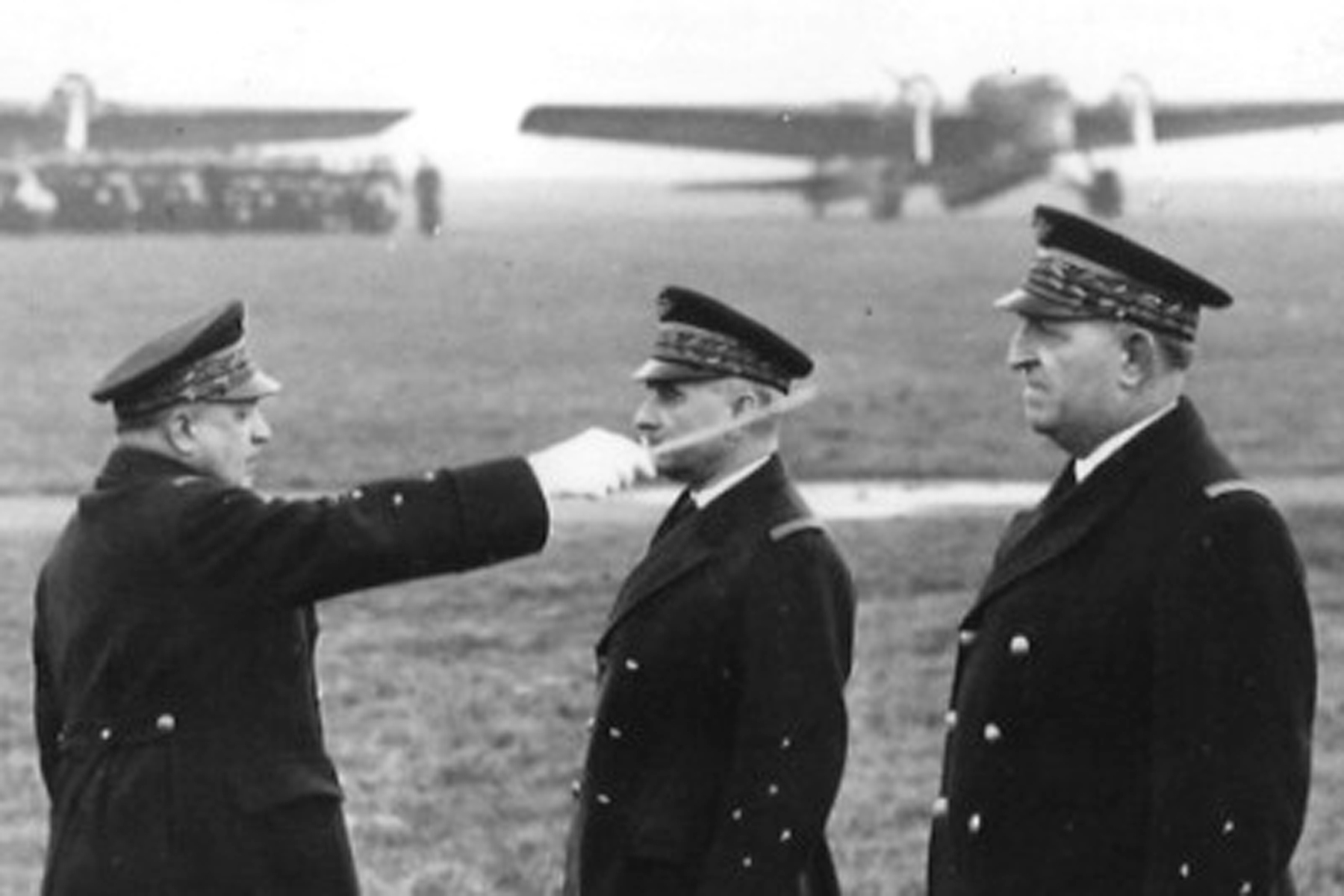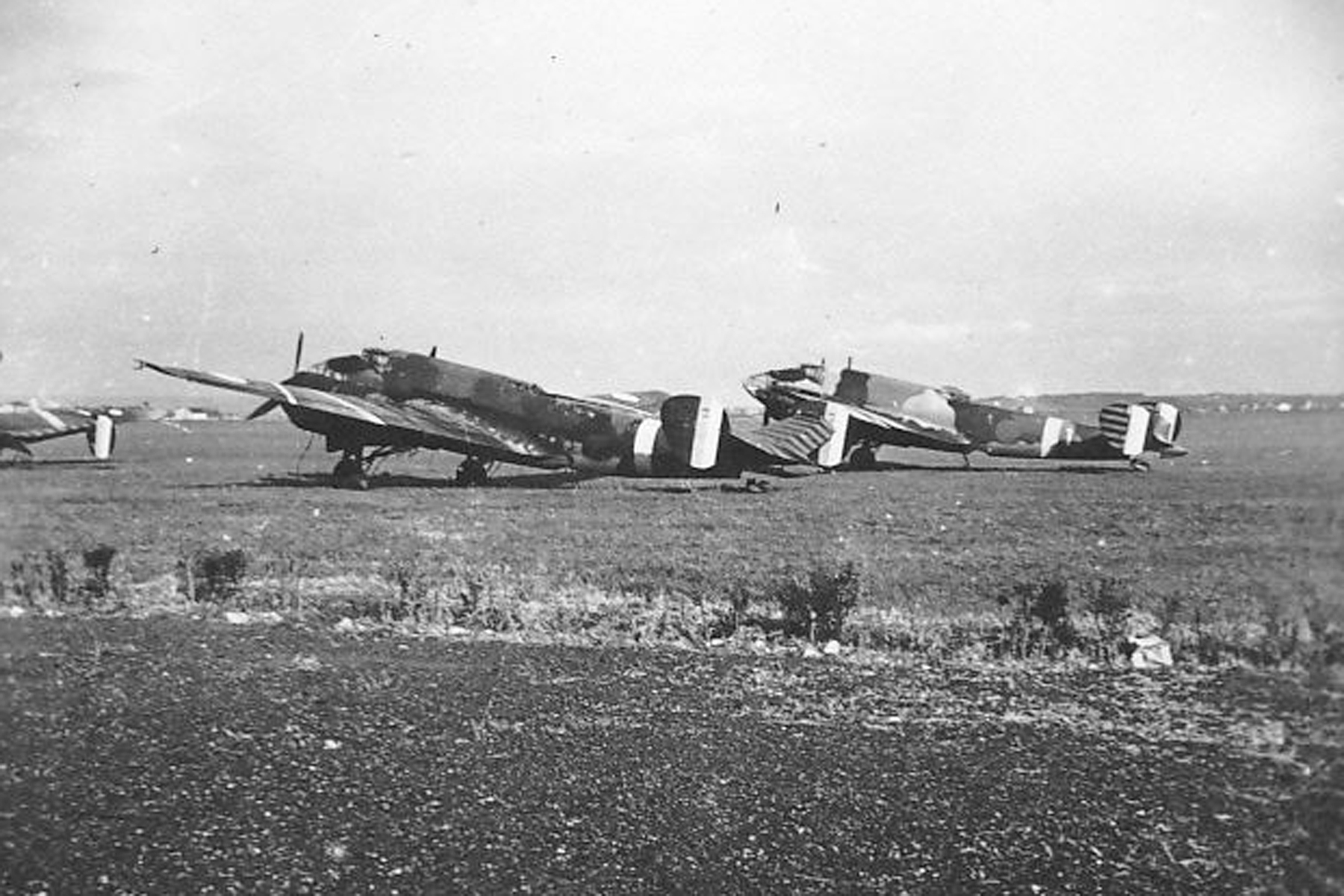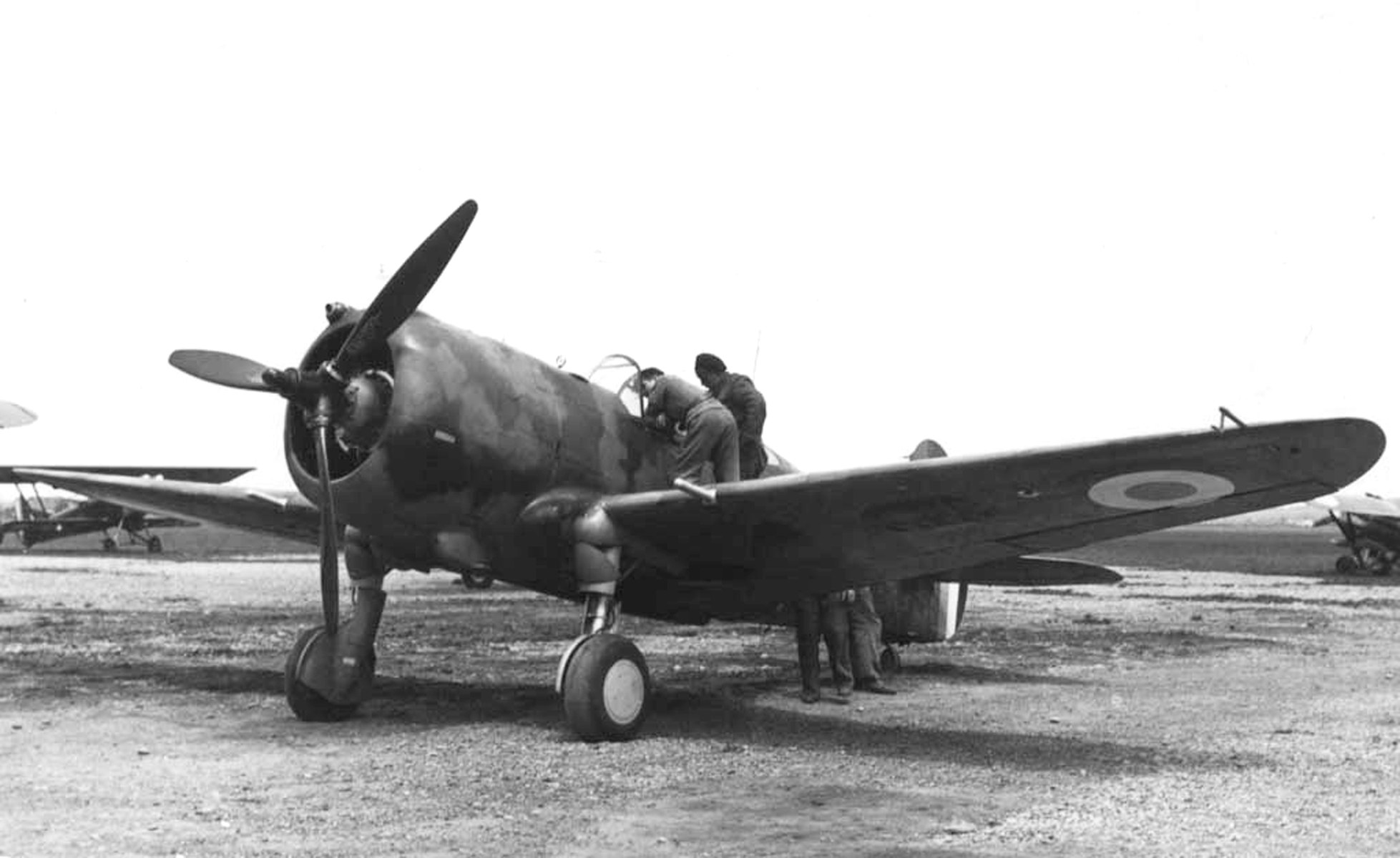Today on the blog, Ryan K. Noppen, author of French Battleships 1914–45, writes about the lesser known aerial dimension of the British Royal Navy's Operation Catapult during World War II.
Operation Catapult, the attempt by the British Royal Navy to neutralize the battleships and other important units of the French Marine Nationale on July 3–8, 1940 following the conclusion of the Franco-German armistice, proved to be the largest naval campaign involving the French navy of World War II. From the North Sea to the Mediterranean to the Central Atlantic, most of the battleships of the Marine Nationale were demobilized, damaged, or sunk in an effort to keep them out of the hands of the Germans. Operation Catapult would have strategic ramifications regarding the course of the war in Europe, Africa, and the Middle East. On one hand it would prove to be an effective statement to both Germany and the United States of Churchill’s fierce determination to carry on the war following the surrender of France; on the other, the attacks had effectively forced a wedge between the British and Marshal Philippe Pétain’s government, known formally after July 10, 1940 as the État Français and colloquially as Vichy France. Diplomatic relations between the two were severed on July 8.
Much of the historical focus on the legacy of Operation Catapult is upon the beginning of a period of informal conflict between the British (and later Allies) and Vichy French, the polarization of the French armed forces between the Free French and Vichy French movements, and the break up of the pre-armistice French navy. There is another consequence of Operation Catapult, however, which stems from a lesser-known dimension of the attacks – the aerial dimension. The French aerial responses to these British attacks were directly responsible for the creation of the Armée de l’Air de l’armistice or Vichy French air force.
Just as the Marine Nationale had evacuated its most valuable units to North Africa in the final days of the Battle of France pending the outcome of the armistice negotiations with Germany, the French Armée de l’Air, or air force, had done likewise with most of its modern and operational aircraft. As was the case for the battleships of the Marine National, the Franco-German Armistice, signed on the evening of June 22, 1940, called for the disarmament and demobilization of aircraft in French territories not under German occupation. On June 30, after specific details had been worked out by the Franco-German armistice commission, Petain’s government reluctantly ordered the Armée de l’Air to begin its demobilization; the Germans demanded that all aircraft were to be partially disassembled, with their controls, propellers, wheels, and armament removed. The Germans intended that throughout the armistice the French should not possess an air force, just like the condition that had been imposed upon Germany by the Allies in the Armistice of 1918; the French were to be allowed only a handful of light aircraft for courier and colonial liaison duties. The armistice commission mandated that the demobilization of the Armée de l’Air and the shipment of aircraft to designated storage depots in metropolitan France be completed by September 1, 1940. This was the state of French air power when the Royal Navy’s Force H, centered around the aircraft carrier Ark Royal and battleships Hood, Resolution, and Valiant, arrived off of the Algerian port of Mers el-Kébir on the morning of July 3, 1940.
 Air Corps General Roger Jean Eugène Pennes
Air Corps General Roger Jean Eugène Pennes
After Vice Admiral Marcel Gensoul, commander of the Force du Raid (the battleships Dunkerque, Strasbourg, Bretagne, Provence, and escorting destroyers) received the British ultimatum to neutralize his force one way or another, he ordered his vessels and the port’s defenses to prepare to defend themselves – this in spite of the fact that Gensoul’s battleships and the shore batteries around the port had begun disarmament and demobilization measures. Gensoul also sent a message to Général de Division Roger Pennès, commandant des forces aériennes et des forces anti-aériennes de l’Afrique du Nord (AFN) or air force and antiaircraft forces commander North Africa, asking for air support against a British attack and to provide air cover for his vessels; if attacked Gensoul intended to fight his way out to open sea. Pennès referred Gensoul’s request for air cover to his superiors and at 11:30 received authorization to rearm his aircraft and allow his units to undertake defensive operations. There were a substantial number of fighters and bombers based at La Sénia and Saint-Denis-du-Sig airfields outside of Oran but all had already been disarmed and were in the process of being demobilized. French ground crews went furiously to work throughout the morning and afternoon; by the time the British ultimatum was set to expire several Curtiss H-75 fighters of Groupe de Chasse GC II/5 La Fayette based at Saint-Denis-du-Sig were ready for combat. The H-75 was an export version of the Curtiss P-36 radial-engine monoplane fighter which entered United States Army Air Corps service in the spring of 1938. Desperate to boost its fighter strength in the face of German rearmament, the Armée de l’Air ordered over 300 H-75 variants, most being delivered before the Franco-German armistice. While underpowered and slow compared to the Supermarine Spitfire Mk.I and the Messerschmitt Bf 109E, the H-75 had lighter controls and was more maneuverable; the H-75s performed very well during the Battle of France, accounting for around one-third of the Armée de l’Air’s combat kills.
At 16:30 the British ultimatum expired and as the British negotiators left Admiral Gensoul’s flagship, the battleships of Force H positioned themselves to open fire. At 16:45 Gensoul radioed General Pennès, requesting fighter cover, as he was preparing to head out to sea. Three H-75s of GC II/5 scrambled and arrived over Mers el-Kébir shortly after the British began their bombardment. From above they observed the sinking of the battleship Bretagne, the grounding of Dunkerque and Provence, but also the escape from the harbor of the Strasbourg. At first the British commander, Admiral Sir James Somerville, did not believe the initial reports from his reconnaissance aircraft that Strasbourg had escaped, but once confirmed he ordered the carrier Ark Royal to mount air attacks against the escaping French battleship. The first of these, consisting of six Fairey Swordfish torpedo bombers armed with bombs and four Blackburn Skua fighter escorts, arrived over the target at 18:45, but in the ensuing attack the Swordfish achieved no hits. The H-75s, covering the Strasbourg from a distance, intercepted the British attack and hampered the bombing runs of the Swordfish. The Skua fighters engaged the French defenders but were woefully outmatched; the Skua was a two-seat multi-role carrier aircraft which had a maximum speed of only 225mph, almost 100mph slower than the H-75. In this first battle between former allies the French pilots were not overly aggressive, not pressing their attacks hard, but one Skua fell to the guns of the H-75 piloted by Adjudant-chef André Legrand. Two of the H-75s were lightly damaged but the French suffered no losses. GC II/5 was able to provide fighter cover over the waters off Mers el-Kébir until nightfall.

On July 3 Armée de l’Air ground crews were only able to prepare the fighters of GC II/5 for defensive action; there had not been enough time to remobilize the bombers stationed around Oran for an attack on Force H. By the afternoon of July 4 however several bombardment units had made a number of aircraft ready for combat. Furious over the attack at Mers el-Kébir, Petain’s government authorized General Pennès to conduct a retaliatory strike against the British on July 4. Late that evening eight Lioré et Olivier LeO 451 medium bombers of Groupe de Bombardement GB II/23 based at Meknès airfield in Morocco took off for a raid against the vessels of Force H anchored at Gibraltar. The LeO 451 was the most capable bomber in the Armée de l’Air at the time, a sleek twin-engine mid-wing design with a maximum speed of 300mph and a capacity for seven 200kg bombs. Two of the bombers suffered mechanical problems en route and were forced to return to base but the remaining six arrived over Gibraltar’s harbor after midnight. The bombers attacked at high altitude, hoping to avoid British antiaircraft fire, but the bombs fell harmlessly into the bay, well away from any targets; the attack force returned to base with no losses or damage.
On July 5, due to misleading reports that the battleship Dunkerque was still operational, the Royal Navy dispatched Force H to again attack the vessel at Mers el-Kébir. At dawn on July 6, Ark Royal launched three attack waves, the first consisting of six Swordfish and the second and third each containing three Skuas and three Swordfish. The first wave of Swordfish attacked with complete surprise, the French failing to detect the British approach due to poor visibility conditions. Again Admiral Gensoul called for fighter cover and several H-75s of GC II/5 took to the air. Two of the fighters were over the harbor by the time the British second and third waves attacked. Sgt. Chef Justin Gisclon shot down one of the Skuas in flames while another Skua was heavily damaged and had to ditch at sea; two of the Swordfish were also damaged.
Having been surprise-attacked twice at Mers el-Kébir Amiral de la Flotte François Darlan, commander of the Marine Nationale, requested another strike against Force H by the Armée de l’Air. A French reconnaissance aircraft reported Force H at sea in the western Mediterranean on July 10 and in the late afternoon nine LeO 451s of GB I/11 at Saint-Denis-du-Sig airfield were dispatched against it. Miscommunications prevented the bombers from locating Force H and after ditching their bombs they returned to base. By the end of the day on July 10, the Armée de l’Air on its own initiative had reactivated its aircraft, conducted over 200 sorties, and destroyed or damaged six British aircraft since the first attack on Mers el-Kébir.

The German military leadership, including Adolf Hitler in particular, were surprised at the French military response during and after Operation Catapult; the high command was actually pleased as it showed the French were willing to defend themselves against British attack – particularly as Hitler’s generals did not wish to commit German units and resources to the defense of unoccupied France and its colonies. Following the British attacks Petain’s government requested from the Franco-German armistice commission that the terms of the armistice be altered, granting the Vichy French state an air force for the purpose of home and colonial defense. On August 5, 1940, the armistice commission informed Petain’s government that it would postpone the full demobilization of the Armée de l’Air pending the threat of continued offensive action by the British. Furthermore it temporarily allowed for the reactivation of 14 fighter groups, 19 bomber groups, 12 reconnaissance groups, and 6 observation squadrons – roughly 800 aircraft – in metropolitan France and its African and Middle Eastern colonies. At the time the Germans saw this concession as merely temporary, but the Vichy state saw this as a step towards a higher degree of military autonomy – a symbolic factor to officials and officers still coming to grips with the rapid defeat of their armed forces by a nation which they had brought to its knees roughly 20 years prior. Subsequent Armée de l’Air combat missions against the British in late September 1940, in response to a British attempt to seize the French port of Dakar in West Africa, would later convince the Germans to grant further aerial concessions to the French, to the extent that Vichy French state was able to maintain a sizeable air force throughout its existence – an unintended and unforeseen consequence of the British decision to neutralize France’s battleships.
To learn more purchase Osprey’s New Vanguard title, French Battleships 1914–45, by Ryan K. Noppen.


Comments
You must be logged in to comment on this post. Click here to log in.
Submit your comment